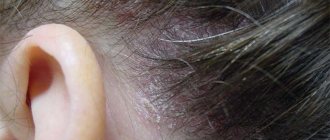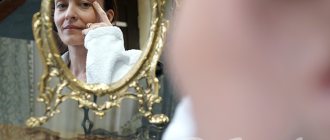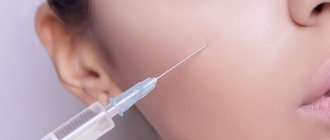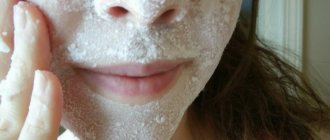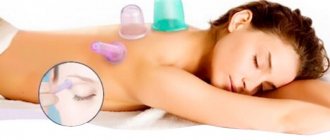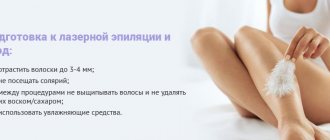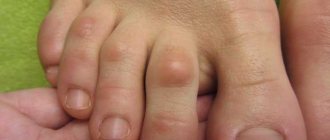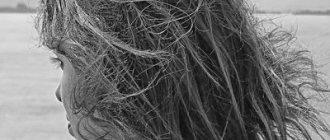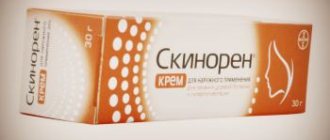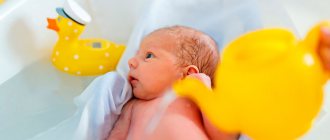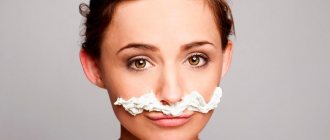Why hair breaks: 5 reasons
You can see in photos on the Internet (and sometimes, unfortunately, in the mirror) what brittle hair looks like. Yes, they become untidy, look like a washcloth, seem very dry and lifeless. And if you start their condition, then after a while the density noticeably decreases: where there used to be a mop, a modest tail will remain.
Before deciding how we will deal with the consequences, we should decide on the triggers - why hair breaks in your case.
Pay attention to the most common causes of hair breakage.
- Chemical damage
One of the most common causes of fragility in women. Perm, careless lightening and frequent dyeing without subsequent care lead to the same type of consequences. This is what happens to hair when exposed to powerful chemicals: first the cuticle is damaged, the hair shafts become fragile, and then they begin to break severely along the entire length and even on the top, right at the roots
- Physical damage
Regular exposure to high temperatures of a hairdryer, curling iron and straightening iron, friction with a scarf or pillowcase, tight styling, carelessness when combing, the habit of twirling strands of hair around your face - all this can be considered physical impact. As a result, the hair breaks approximately from the middle of the length, and we will tell you what to do about it below.
- Impact of aggressive environmental factors
Essentially, this is the same physical impact, but it can be attributed to force majeure. After all, it is always frosty in winter; solar ultraviolet radiation cannot be turned off in the warm season. And try to enjoy the sea without ever getting your strands wet in sea water. Meanwhile, all of the above dries out and damages the hair.
- Genetics
Any hairdresser will tell you that brittle hair is dry and damaged hair. Sometimes they are like that by nature. For example, curls and curly strands are porous in themselves; cuticle scales fit unevenly to their surface and do not retain moisture well. As a result, the curl is less protected from damage and fragility.
- Insufficient or improper care
And the most important reason: hair breaks off due to improper care. For example, it would be a big mistake to take a volumizing shampoo instead of a nourishing one on a trip to the sea. Or ignore conditioner after washing. Or comb your hair without a smoothing spray. We make such mistakes every day.
Treatment
Correction of hair condition includes measures to treat the underlying disease and the use of medicinal cosmetics. The list of necessary medications and procedures depends on the cause of this disorder.
The patient is prescribed a course of vitamins. In some cases, it is advisable to take them in the form of injections (for gastrointestinal disorders).
In addition, it is necessary to correct lifestyle and habits (quitting smoking, consuming coffee and alcoholic beverages). Nutrition should be balanced and contain the required amount of fats and microelements. It is extremely important to take in the required amount of fluid daily, since a lack of water also affects the condition of the hair.
In addition to medicinal cosmetics, various procedures aimed at hair restoration are effective: mesotherapy, cryomassage, etc.
What to do if your hair becomes brittle and dry: care rules
Care is the entire beauty routine aimed at the beauty of hair, from washing or combing to the use of special cosmetics. If you supplement your routine with effective ways to combat breakage, your strands can be saved from thinning and hairdresser’s scissors in just a couple of months.
We tell you how to get rid of hair fragility and what to start from when adjusting your care.
How often should you wash your hair?
Even with increased fragility, the scalp can be prone to oiliness and require frequent washing. And yet, now that the strands are weakened, it is advisable to cleanse them no more than once every two days, and ideally once a week, since tap water and shampoos damage the protective layer on the surface of the hair.
What can help prevent the problem from getting worse with frequent washing?
- Apply nutrients to length before shower. It can be a balm or oil - products of this type envelop the hair, reducing the drying effect of the shampoo.
- Introduction to shampoos with a soft cleansing base. In their formulas, sulfates are softened by coconut derivatives or are absent altogether. The effect on hair is more delicate.
What comb should I use?
Plastic “from the transition” or wooden ones are undesirable. The former may still have sharp irregularities, while the latter very soon dry out and become covered with microcracks. The same thing with metal “massages” and combs - too hard. Here are three best options:
- High quality plastic. Accurate casting without nicks or irregularities.
- Natural bristles. It acts gently and does not aggravate fragility.
- Silicone or nylon. Gives an antistatic effect.
It is better to comb hair up to your shoulders and below in two stages using two different combs:
- Gently untangle the strands with a wide-toothed comb.
- Gently brush 50 times from roots to ends while massaging the scalp with the bristles.
Thanks to this technique, brittleness during combing can be removed almost completely, and sebum from the roots of the hair will be evenly distributed to the ends and will create natural protection on the hair fiber.
Proper use of styling
Until hair breakage can be stopped completely, it would not hurt to completely abandon styling. But let's be realistic - this is not always possible. Then adhere to at least these five principles:
- For now, avoid curling with a curling iron or straightening with a flat iron.
- Dry your hair naturally or with a hairdryer on low temperature.
- Wear loose hairstyles, do not pull tight ponytails, buns and braids.
- Use a heat protectant before blow drying.
- Use styling products with strengthening properties.
Complete diet
The diet will not affect hair fragility that has already begun along the length, but the follicles need vitamins and minerals. In addition, a healthy diet has another significant advantage. Sometimes hair breaks and falls out at the same time, so much so that many women panic and get a short haircut. A nutritious diet will help reduce hair loss - that's one problem to worry about.
Scientists recommend including in your diet the following foods rich in substances essential for hair:
- protein (meat, eggs, legumes, cottage cheese, cheeses, oatmeal, whole grain bread);
- rich in fatty acids (salmon, trout, herring, flaxseed oil, seafood, nuts);
- rich in antioxidants (fruits, vegetables, berries);
- sources of B vitamins (potatoes, organ meats, cereals, leafy greens);
- sources of calcium (kefir, yogurt, hard cheeses, drinking water);
- sources of iron (buckwheat, red meat, seafood, spinach).
Proper hair care
Care products from specialized lines work most effectively against fragility. They are able to restore damaged cuticle, strengthen hair along the entire length, and restore elasticity, smoothness and resistance to external influences to the strands.
Moreover, you won’t need a whole army of jars. It is not the quantity that is important, but the quality and regularity of care.
So, what remedies will help you?
| Important! The main tip on how to treat dry hair ends and brittle hair shafts is the absolute necessity of using professional cosmetics. Home methods can only play a supporting role. |
The reason for the categorical nature of the above advice is that care products for dry hair are specially created to comprehensively solve all problems associated with it. They have a number of useful properties:
- increased hydration;
- preventing cuticle cell detachment;
- pronounced nutritional effect;
- simplifying combing and styling hair;
- protection of hair from damage by high temperatures;
- antistatic effect.
Shampoo
When choosing a shampoo for washing hair with increased dryness and brittleness, you should focus on the presence of specialized care components in its composition. An excellent option would be shampoos that contain non-essential oils of plant origin (for example, almond oil or avocado oil), as well as restorative substances such as lanolin, glycerin or panthenol.
The choice is simplified by the fact that cosmetics manufacturers have long studied all the problems associated with dry hair and have launched the production of products aimed specifically at this type of hair. Therefore, in the vast majority of cases, such a medicinal shampoo will be equipped with a clearly visible mark on the label - it is quite difficult to confuse it.
Balms and conditioners
An important property of these care products is the versatility of their action:
- hair nutrition - the variety and richness of components in conditioning balms make them an excellent source of biologically active compounds for follicles and scalp;
- protection - such products often have a thermoprotective effect and also prevent the destructive effects of ultraviolet radiation;
- conditioning the hairstyle, simplifying its creation, as well as providing the hair with pomp and volume;
- color preservation - conditioners and balms that have a similar effect prevent loss of pigment from colored hair.
| Important! Conditioner should be used after every hair wash. It should be applied to dry hair, then pause, allowing the components to act as fully as possible, and only after 7-10 minutes rinse with warm water. |
Moisturizing fluids, sprays and other products
Almost all cosmetics for dry hair have a moisturizing effect. But sufficient fluid content is such an important factor in the treatment of such disorders that we consider it necessary to include it in a separate additional paragraph. The use of additional care that restores moisture balance once every 7-10 days should become mandatory for you.
Masks
These are thicker and richer than balms and conditioners, products whose main function is not moisturizing, but nutrition. Most often, professional masks have a fairly pronounced effect, and therefore they should be used no more than once a week, strictly following the instructions.
Oils
This is a good answer to the question of how to cure dry split ends of hair. Vegetable non-essential oils are heavy substances that glue the cuticle well, preventing the hair shaft from splitting. In addition, they have an excellent moisturizing effect.
Home aids
1. You need to mix 2 tsp. nutritional yeast and 50 ml low-fat kefir. Keep the mixture warm for 15 minutes. Then apply to your head, cover it with a cloth and keep for 30 minutes. Then rinse your hair with warm water and repeat the procedure every week. 2. You will need one yolk from a medium-sized egg, which you need to beat with 1 tbsp. castor oil. Next, apply the mixture to the root zone and leave for 2.5–3 hours. Then wash your hair with a mixture of water and lemon juice. 3. Dilute bleached henna with boiling water at the rate of one pack per 30 cm of hair length. Leave for 15 minutes and add 1 spoon of olive oil. Then spread the mixture on your head and throughout your hair and keep it on for half an hour. Then rinse your hair with warm water. 4. Mix kefir with any cosmetic non-essential oil in a 2 to 1 ratio and heat the resulting mixture in a water bath. A substitute for kefir can be yogurt, low-fat sour cream or natural yogurt without fruit flavors and ingredients. Make sure that the dairy products do not curdle. Next, cover your head with this mixture, insulate it with a terry towel and pause for 30 minutes. Then rinse your hair with warm water. 5. Take equal amounts of liquid honey and good olive oil. Mix and apply to hair, paying special attention to the ends. Keep the mask on for at least an hour, and then rinse your hair thoroughly. 6. Take a liquid mixture of vitamins A and E, add to them an equal amount of dimexide and twice the volume of castor and burdock oils. Apply the resulting solution to both the scalp and hair. Wrap your head in cling film and leave the mask on for a long time, for example, all night. This product has a good antiseptic, anti-inflammatory and nourishing effect, but is difficult to wash off, so pay special attention to washing your hair in the morning. 7. Peel a large ripe peach or persimmon and remove the seeds. Pass the remaining fruit pulp through a blender, and then add 2 tbsp to the resulting pulp. milk. Apply this mixture to your head, leave for half an hour, and then rinse your hair with warm water.
Speaking about how you can cure very dry and brittle hair on your head at home, you cannot fail to mention the excellent results of using medicinal herbs. So, to wash your hair, you can safely use herbal infusions from:
- stinging nettle leaves;
- peppermint;
- linden flowers;
- pharmaceutical chamomile.
Additional care products
- Special gels will help you make it easier to style unruly, brittle and thin hair. They will smooth and organize the strands, and also give them a natural shine.
- A good option for dealing with split ends of dry hair is products containing silicone. They form a thin protective shell around the hair, preventing it from splitting. Remember that such cosmetics make the hair heavier, and therefore should only be used on the ends of the hair.
- Polishing your hair using a cold hairdryer and a round comb with natural bristles will add additional smoothness and shine. If you comb your hair from roots to ends with long, continuous movements, while simultaneously directing air from a hair dryer along the hair, this will smooth out the cuticle scales, improving the appearance of the hairstyle as a whole.
Remedies for hair breakage at home
What can you do at home without turning to a specialist if you have brittle hair? First, don’t be nervous—stress will only make the problem worse. Secondly, choose special anti-hair brittle products with active ingredients.
The optimal solution is four types of products acting in combination: shampoo, conditioner, concentrated mask and leave-in care. The compositions welcome ceramides, natural oils, strengthening plant extracts, vitamins, moisturizers and compounds that envelop the hair with a protective barrier.
Symptoms and diagnosis
Hair fragility is diagnosed visually by a doctor. The problem is characterized by the following symptoms:
- hair is dull and lifeless;
- they are broken off at different heights;
- look untidy.
- The consultation with a trichologist will include:
- interviewing the patient and collecting anamnesis;
- trichoscopy (examination of hair condition using a special device);
- biochemical blood test (to identify deficiencies of vitamins and minerals).
Consultation with other specialists and additional research may also be required.
Professional hair restoration treatments
Salon care is effective in solving some problems: we have prepared an overview of express hair restoration methods used by professionals.
Molecular modeling
What gives
. Intensive care, restoration and consolidation of protein, ceramide, vitamins
How it happens
.Nutritional compositions are applied over the entire length in several layers, which are fixed by thermal procedures (iron or thermal helmet)
What result
.The strands are silky to the touch, soft and beautiful. After the procedure, you can color it - the hair is protected and the color will fit well
Lamination
What gives
. Glossy shine
How it happens
. After applying a special composition, the protective laminating film thickens each hair
What result
. The hair stops frizz, is smooth and strong, and the hairstyle becomes more voluminous. Lamination can be “colored” to add shade
Oil massage
What gives
. Nourishing the roots, and as a pleasant bonus – a relaxing effect, relieving tension
How it happens
. A mixture of sesame, coconut, almond oils and essential oils is applied to the hair.
Result
. Depending on the existing problem, the composition is selected: to reduce dandruff with tea tree and bey oils, for shine, the procedure is performed with geranium and ylang-ylang oils.
Laser helmet
What gives
. Accelerating growth
How it happens
. A helmet is placed on the head, which alternately performs a massage and uses a laser: low-frequency waves accelerate blood circulation, stimulate the growth of new hairs, and awaken “sleeping” bulbs.
Result
. Lost hair is restored and new hair begins to grow.
Restoring your hair to its former thickness is in your hands: perform home procedures or turn to specialists - it’s up to you. But remember that with Aleran products, care becomes easy and effective.
Products from the mass market
1. Antistatic agents
Some manufacturing companies produce a series of products with an anstatic effect. They perfectly nourish, smooth, and remove static tension from the hair.
To eliminate the “dandelion” effect, you can use sprays, shampoos, balms, masks and other products.
Antistatic agents form a film on the strands that strengthens the curls, saves them from overdrying, and restores them. These products contain silicones, glycerin and vitamins.
However, you should not buy cosmetics that are too cheap. They most often contain low-grade components that can lead to brittle and dry hair.
Brands that have earned recognition are L'OREAL, ESTEL, Wella Professional, Schwarzkopf Professional, Natura Siberica and some others.
Antistatic agents will help in situations where you need to get yourself in order quickly.
2. Special shampoos and conditioners.
Nashi Argan Shampoo
Dry, damaged hair with split ends are more susceptible to electrification. This fact must be taken into account when purchasing skincare products.
In addition to “antistatic cosmetics,” a series for damaged hair is suitable. It is better to put off your usual shampoo and conditioner until it gets warmer. Now our task is to moisturize and nourish the strands as much as possible. Choose a product that contains vitamin E, coconut, olive or avocado oil, and wheat proteins.
3. Essential oils.
Oils of tea rose, lavender and rosemary will save you from electrification. If you use them regularly, you will notice that your hair begins to become magnetized much less, and then you will completely forget about the problem. They nourish hair from the inside, making it stronger and more manageable.
Experts recommend aromatherapy more often and adding oils to cosmetics.
Olive, burdock, flax and castor oils also have general strengthening and smoothing properties.
4. Wooden comb.
Experts recommend using a natural comb made from oak, cherry, pine and birch.
Wood eliminates static electricity and is completely environmentally friendly.
There are also combs with antistatic coating. They are made from rubber, carbon, silicone and ebonite. They make combing easier, help the hair not get tangled and magnetized.
4. Hair dryer with ionization effect.
In the life of a modern woman, time plays a leading role. Sometimes it’s difficult to do without a hairdryer and electrical appliances or give them up altogether.
A gentle option is an ionic hair dryer. It will make your hair shiny and manageable. In addition, you will save electricity - because it will take less time to dry.
5. Leave-in conditioner.
These conditioners do not need to be washed out of your hair. They are applied to wet hair and left until the next wash. They perfectly restore hair, add an attractive shine, and make strands smooth and full.
If your hair is magnetic, tangled and difficult to style, then you should think about purchasing such a product.
Leave-in conditioners come in the form of sprays, oils, lotions and serums.
